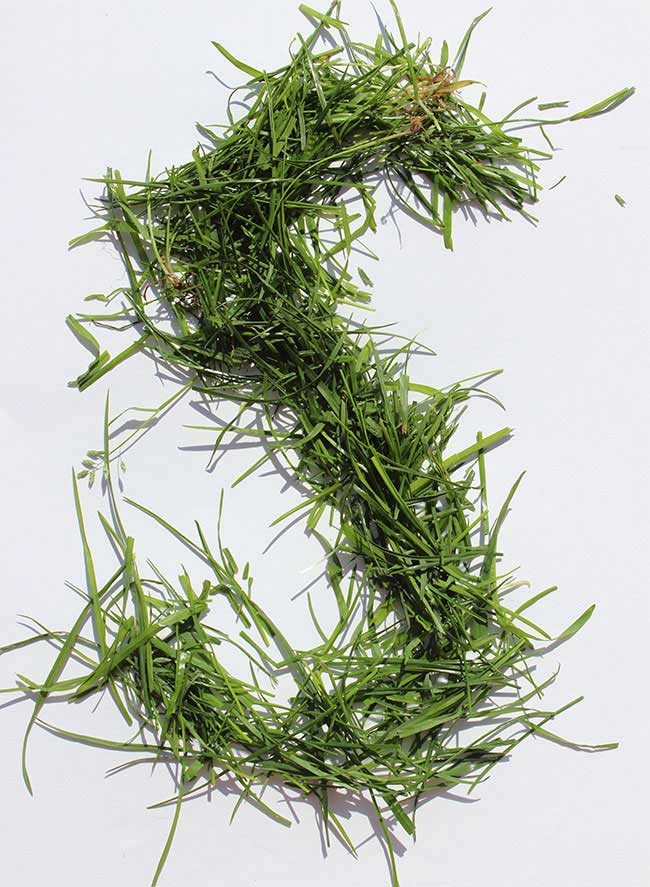“A lot of applicants I have interviewed have come from a myriad of backgrounds. Some have studied fine art, illustration, and on occasion even history. Whilst influence will kickstart their minds, experimentation will deliver creativity. But what do you show in your book? Well, show some experimentation.
“Try to keep the results to one or two spreads per project. Don't show thirty different ways of writing the same word in a different typeface, that isn't experimentation. Do show five ways of how you experimented with the word and used different mediums.
“An example might be:
“I have no interest in the fact that you tried the name of a new brand for double cream in different typefaces. I am interested if you tried to write in cream, or grass, or whatever, and that led you to a certain type style or treatment.”
 Grass letter by Newcastle-based design student Sarah Hanson
Grass letter by Newcastle-based design student Sarah Hanson
Drew is the author of the Know Your Onions book series, and the above advice is a snippet from his 2014 pocket book What to Put in Your Portfolio and Get a Job.
It made me think of a small project from some years ago. I had to create an emblem for an Apple user forum, but no matter what ideas I showed my client, none hit the mark. Almost at the point of giving up, I decided to share a few photos of an experiment. It involved carving an apple to form an ink stamp, then digitising the impression to create a vector symbol. The result was similar to some of the earlier options, but after seeing how it was created, my client found it much easier to buy into the idea, and in turn was delighted with the outcome.
Depending on how involved clients want to be, sharing experiments can be a real timesaver. Just remember not to share too many.
